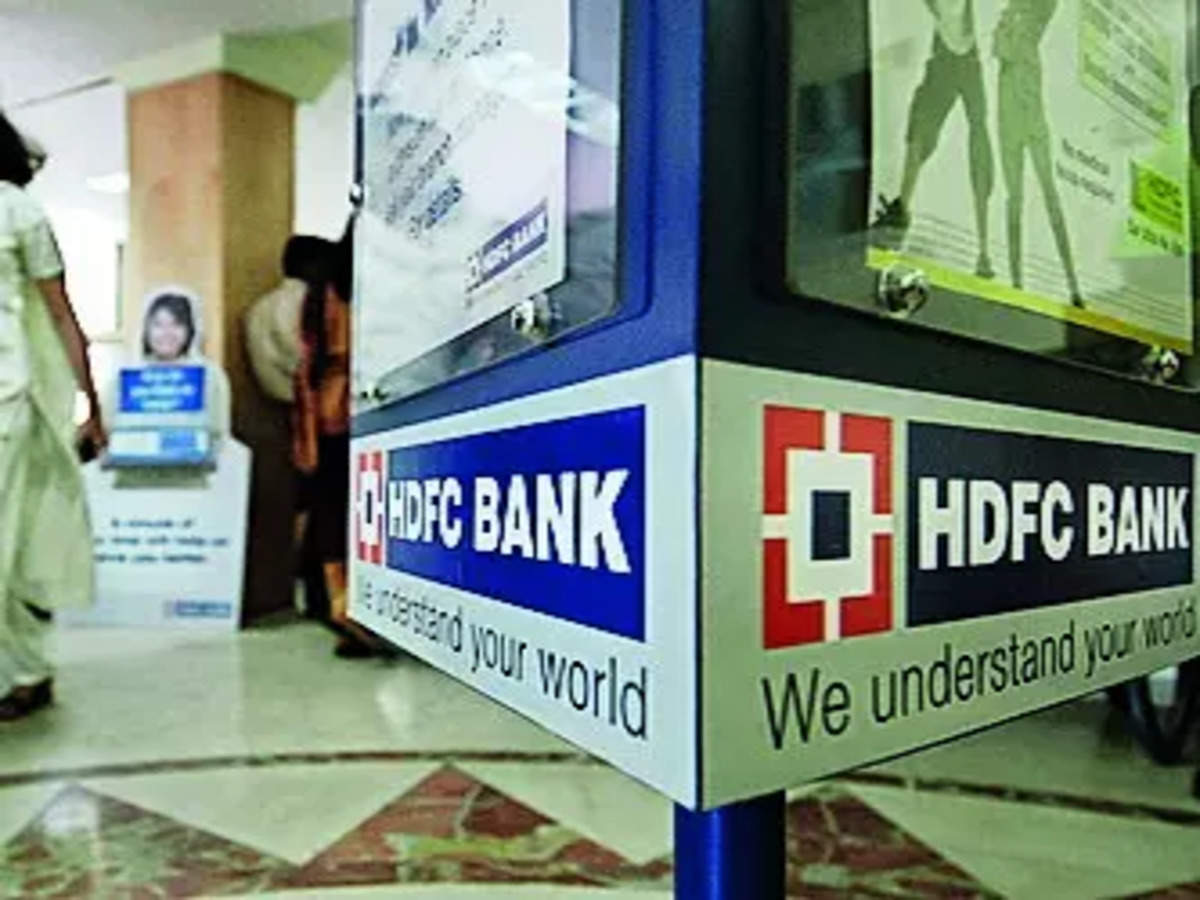
Brokerage Insights HDFC and Kotak
Brokerage Radar: Bernstein’s ‘Outperform’ on HDFC Bank, Jefferies’ ‘Hold’ on Kotak Mahindra
Problem: Navigating the Complexities of Brokerage Ratings
Investing in the stock market can be a daunting task, especially when you’re trying to keep up with various brokerage ratings and recommendations. As the market evolves, investors look to brokerage houses like Bernstein and Jefferies for guidance on where to invest their money. These ratings can impact stock prices and investor sentiment significantly, which is why it’s crucial to understand what each recommendation means.

Recently, Bernstein issued an ‘outperform’ rating for HDFC Bank, while Jefferies assigned a ‘hold’ rating for Kotak Mahindra Bank. For retail investors and market enthusiasts, understanding why one bank is considered a better bet than another can make all the difference in investment decisions. Yet, interpreting these ratings and making sense of the data behind them can be complex. Many investors struggle to understand the reasoning behind these ratings and what they mean for their portfolios.
Agitation: Why Investors Are Uncertain
When brokerage firms release ratings, they do so based on comprehensive research and analysis of various financial metrics, growth prospects, and market trends. These ratings—like Bernstein’s ‘outperform’ on HDFC Bank and Jefferies’ ‘hold’ on Kotak Mahindra—are not just labels; they reflect the brokers’ confidence in a company’s future performance. However, many retail investors find themselves puzzled by these terms. What does ‘outperform’ mean? How should one interpret a ‘hold’ recommendation?
For instance, Bernstein’s ‘outperform’ rating on HDFC Bank suggests that the brokerage believes the stock will do better than the overall market and other peers. On the other hand, Jefferies’ ‘hold’ rating on Kotak Mahindra indicates a more cautious approach, suggesting that investors should not expect significant changes in stock performance in the near term. The difference between these ratings can be a source of confusion, as both banks are considered major players in India’s financial sector. Investors want to know whether to adjust their portfolios based on these ratings or to maintain their current positions.
The uncertainty also extends to understanding the criteria these brokerages use. Investors may ask, why does Bernstein see upside potential in HDFC Bank while Jefferies remains conservative with Kotak Mahindra? Such questions highlight the need for a deeper analysis of the factors that led to these divergent ratings, allowing investors to make more informed decisions.
Solution: Breaking Down the Brokerage Ratings for Better Understanding
Understanding the brokerage radar on HDFC Bank and Kotak Mahindra can provide valuable insights for investors. This article aims to decode the reasons behind Bernstein’s ‘outperform’ rating for HDFC Bank and Jefferies’ ‘hold’ recommendation for Kotak Mahindra. With a detailed analysis of these ratings, investors can better grasp how to approach their investment decisions and align them with their financial goals.
Why Bernstein Has an ‘Outperform’ Call on HDFC Bank
What Does ‘Outperform’ Mean?
In brokerage terminology, an ‘outperform’ rating means that the stock is expected to do better than the overall market or its sector peers. When Bernstein rates HDFC Bank as ‘outperform’, it indicates that they expect the stock to deliver returns that exceed the average performance of similar stocks or the broader market index. This kind of rating is often based on factors like strong earnings growth, robust market position, or favorable macroeconomic conditions.
Reasons for Bernstein’s Positive Outlook on HDFC Bank
Bernstein’s rating comes in light of several positive developments and financial metrics observed in HDFC Bank’s recent performance:
- Strong Balance Sheet: HDFC Bank has consistently maintained a strong balance sheet, characterized by healthy capital adequacy ratios, low non-performing assets (NPA), and a solid deposit base. Bernstein believes this stability makes the bank well-positioned to handle market volatility and economic challenges.
- Growth Potential Post-Merger with HDFC Ltd.: The merger between HDFC Bank and its parent company, HDFC Ltd., is expected to open up new growth avenues, including a larger customer base and an enhanced ability to cross-sell financial products. This integration is seen as a long-term growth driver, giving the bank an edge in expanding its loan book and increasing market penetration.
- Resilient Earnings Performance: Despite challenges like high interest rates, HDFC Bank has shown resilient earnings growth over the past few quarters. Bernstein expects this trend to continue, driven by robust retail and corporate lending. The bank’s ability to maintain net interest margins (NIMs) despite the challenging macro environment has been a key point in Bernstein’s analysis.
- Digital Initiatives and Technological Advancements: HDFC Bank’s focus on digitization and technology has been another factor influencing Bernstein’s ‘outperform’ rating. The bank has invested heavily in digital banking platforms, which have helped it improve customer experience, streamline operations, and cut costs. This is seen as a significant factor that could contribute to sustained growth in the coming years.
These factors collectively support Bernstein’s view that HDFC Bank is likely to outperform its peers, making it a favorable choice for investors looking for steady returns.
Why Jefferies Has a ‘Hold’ Rating on Kotak Mahindra Bank
What Does ‘Hold’ Mean?
A ‘hold’ rating suggests that investors should not buy more shares of the stock, but neither should they sell their existing holdings. It indicates that the brokerage expects the stock to perform in line with the market or maintain its current price levels in the near term. Jefferies’ ‘hold’ rating on Kotak Mahindra Bank reflects a neutral stance, with the recommendation being that investors should wait for further developments before making significant moves.

Factors Influencing Jefferies’ Neutral Stance on Kotak Mahindra
Jefferies’ ‘hold’ rating on Kotak Mahindra Bank is based on several considerations:
- Leadership Transition: One of the significant reasons for the cautious approach is the leadership change at Kotak Mahindra Bank. After Uday Kotak’s resignation as CEO, there has been some uncertainty around the new management’s strategic direction. Jefferies is taking a ‘wait-and-see’ approach to understand how the new leadership will steer the bank, particularly in a competitive market.
- Moderate Loan Growth: While Kotak Mahindra Bank has shown growth in its loan book, the pace has been moderate compared to peers like HDFC Bank. Jefferies points out that Kotak Mahindra’s cautious approach to lending might limit its ability to capitalize on growth opportunities, especially in a recovering economic environment. This conservative stance in lending is reflected in their more balanced view.
- Valuation Concerns: Another reason for Jefferies’ ‘hold’ rating is the concern over valuations. Kotak Mahindra Bank’s stock has historically traded at a premium valuation compared to other private sector banks. Jefferies believes that this premium valuation may already be priced into the stock, making it less attractive for new investors looking for growth.
- Focus on Risk Management: Kotak Mahindra Bank has been recognized for its strong risk management practices, including a low non-performing asset ratio. While this is a positive, Jefferies believes that the bank’s conservative lending policies could limit short-term growth potential, leading to a more cautious ‘hold’ stance.
Jefferies suggests that while Kotak Mahindra Bank remains a strong and stable player in the Indian banking sector, the current environment does not warrant an aggressive buy call. Instead, the firm advises holding on to existing shares while awaiting clarity on the bank’s future strategies.
Case Study: Impact of Brokerage Ratings on Stock Performance
The influence of brokerage ratings on stock prices is evident from past examples, where positive or negative ratings have led to significant market reactions. Let’s look at a case study that shows how brokerage ratings impacted stock performance:
Case Study: HDFC Bank’s Stock Reaction to Ratings
In 2022, HDFC Bank received an ‘overweight’ rating from Morgan Stanley, a rating similar to Bernstein’s recent ‘outperform’ call. Following the positive rating, HDFC Bank’s stock price saw a notable uptick as investors became more confident in the bank’s growth prospects. The rating emphasized HDFC Bank’s robust balance sheet, market share, and resilience in challenging market conditions, much like Bernstein’s current analysis.
This past instance shows how a positive rating can influence investor sentiment, leading to increased buying activity. For HDFC Bank, the ‘outperform’ rating by Bernstein could potentially lead to similar market reactions, as investors may see it as a signal to buy.
Case Study: Kotak Mahindra’s Stock Performance After Neutral Ratings
In contrast, in 2021, Kotak Mahindra Bank faced a ‘neutral’ rating from a different brokerage due to concerns over loan growth and high valuations. Following the rating, Kotak Mahindra’s stock price remained largely stable with minor fluctuations, as investors took a more wait-and-watch approach. This reaction aligns with Jefferies’ current ‘hold’ recommendation for Kotak Mahindra Bank, reflecting the market’s cautious outlook.
These examples illustrate the impact brokerage ratings can have on stock performance and investor behavior, offering valuable insights for those making investment decisions based on brokerage radar.
How Investors Can Use These Ratings for Better Decision-Making
Align Ratings with Investment Goals
Investors should use brokerage ratings like Bernstein’s and Jefferies’ as part of a broader investment strategy. It is important to align these recommendations with personal investment goals, risk appetite, and time horizons. For instance, those seeking growth opportunities might find Bernstein’s ‘outperform’ recommendation for HDFC Bank appealing, while more conservative investors may appreciate Jefferies’ cautious stance on Kotak Mahindra.
Research Beyond Ratings
While ratings provide guidance, it’s crucial to dive deeper into the factors behind these recommendations. Understanding the balance sheet strength, leadership transitions, and strategic direction of banks like HDFC and Kotak Mahindra will provide a more holistic view of their potential.
Focus on Long-Term Trends
Both HDFC Bank and Kotak Mahindra are major players in India’s financial sector with strong fundamentals. Investors should consider long-term trends in the banking sector, including digital banking initiatives, regulatory changes, and the economic outlook, while making decisions based on brokerage radar.
Maldives Adopts Indias UPI System


